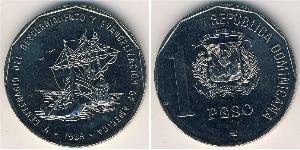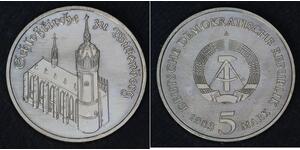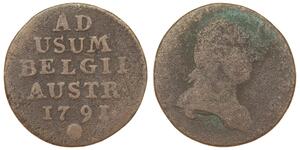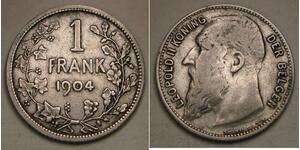(Verkauft für $42.0)
1882, Hamburg (City). Bronze "Bicentennial of the Church in St. Pauli" Medal. UNC!
Mint year: 1882 Medallist: Bergmann Mint Place: Hamburg Condition: Minor greenish deposits otherwise UNCirculated! Denomination: Medal - 200th Anniversary of the Church in St. Pauli (a quarter of Hamburg) Weight: 34.20gm Material: Bronze Diameter: 39mm
Obverse: Front-view of the Church in St. Pauli surrounded by religious legend. Reverse: Inscription in seven lines.
St. Pauli is a quarter of the city of Hamburg belonging to the centrally located Hamburg-Mitte borough. Situated on the right bank of the Elbe river, the nearby Landungsbrücken is a northern part of the port of Hamburg. St. Pauli contains a world-famous red light district around the iconic Reeperbahn area. As of 2016 the area had 22,595 residents.
At the beginning of the 17th century it developed as a suburb called 'Hamburger Berg' (Hamburg mountain) outside the gates of the nearby city of Hamburg and close to the city of Altona. The name comes from a hill in that area that was planned by Hamburg in 1620 for defence reasons (free field of fire for the artillery). Therefore, settlement was initially allowed there, but soon businesses, which were desired inside neither Hamburg nor Altona, e.g. for their smell or noise, were relegated to 'Hamburger Berg'. Also the rope makers (or 'Reeper' in Low German) went here because in the city it was hard to find enough space for their work.
The name of St. Pauli's most famous street Reeperbahn, or "Rope Walk," harkens back to its rope making past. When people were officially allowed to live in St. Pauli at the end of the 17th century the city government moved workhouses and (pestilence) hospitals out of the city to 'Hamburger Berg,' which later was named after its still existing church, 'St. Pauli' (Saint Paul). St. Pauli was mainly used by sailors for entertainment during their stay in Hamburg and Altona. To this day it is known as the sinful mile, combining the upper and common standards of entertainment, from musicals, theatres, to bars and clubs, as well as the most known red light district.

|
Beigetragen von:
anonymous 2018-05-10 |

1 Rubel Russisches Reich (1720-1917) Sil ...
Diese Gruppe hat 15 Münzen / 15 Preise
Add coin to this group

1 Dollar Vereinigten Staaten von Amerika ...
Diese Gruppe hat 16 Münzen / 15 Preise
Add coin to this group

1 Peso Dominikanische Republik Kupfer/Nickel
Diese Gruppe hat 3 Münzen / 3 Preise
Add coin to this group
1 Liard Austrian Netherlands (1713-1795) Kupfer
Diese Gruppe hat 7 Münzen / 7 Preise
⇑
211 coins were grouped from 2025-05-21 to 2025-05-28
Eine von ihnen ist:
1 Franc Belgien Silber Leopold II (1835 ...
Diese Gruppe hat 15 Münzen / 14 Preise
⇑












-300-150-NgSsHgTyCiIAAAGW1HxyjNgw.jpg)








